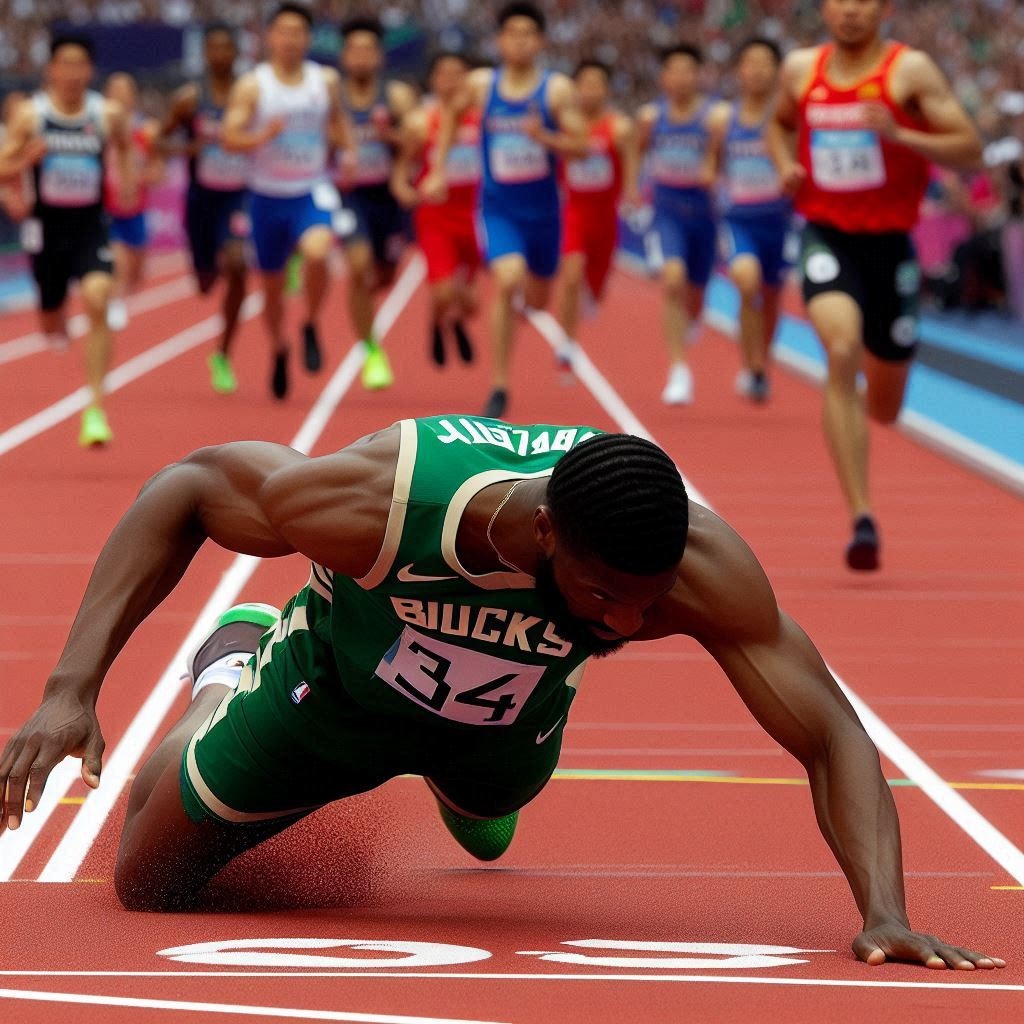The idea of trading Giannis Antetokounmpo, a two-time NBA MVP and one of the league’s most dominant players, to the Houston Rockets has surfaced in speculative discussions. While the Rockets are a young, rebuilding team with promising talent, such a trade would be illogical for both Giannis and Houston.
Giannis Antetokounmpo: A Dominant Force with Notable Flaws
Giannis, often referred to as the “Greek Freak,” is a generational physical talent. His ability to dominate in the paint, defend multiple positions, and lead fast breaks used to be unmatched. However, even a player of his calibre has weaknesses that teams must account for when building around him. These flaws—namely his lack of a consistent outside shot, limited play making vision, and struggles in high-pressure half-court offence—make a trade to the Rockets a poor fit.
1. Lack of Consistent Outside Shooting
Giannis’ most glaring weakness is his inconsistent jump shot, particularly from beyond the arc. In the 2023-24 season, Giannis shot just 27.4% from three-point range on 1.3 attempts per game, per Basketball-Reference. While he’s improved marginally over the years, he remains a non-threat from deep, allowing defenses to sag off him and clog the paint. This is problematic for a Rockets team that emphasizes spacing and perimeter-oriented play.
Houston’s young core—Jalen Green, Jabari Smith Jr., and Cam Whitmore—relies heavily on driving lanes and open three-point looks. The Rockets ranked 7th in the NBA in three-point attempts per game (35.8) in 2023-24, per NBA.com. Pairing Giannis with this group would shrink the floor, as defenders could ignore him on the perimeter and collapse on Houston’s slashers. Without a reliable shooting big man (like Brook Lopez in Milwaukee) to pull defenders away, Giannis’ presence would stifle Houston’s offensive flow.
2. Limited Playmaking Vision
While Giannis is an elite scorer and rebounder, his playmaking is not at the level of other superstars like LeBron James or Nikola Jokić. He averaged 6.5 assists per game in 2023-24, but many of these come from straightforward kick-outs or dump-offs rather than intricate reads. His tunnel vision in high-pressure situations often leads to predictable passes or turnovers (3.7 per game last season).
The Rockets’ offense thrives on ball movement and quick decision-making, with players like Fred VanVleet and Alperen Şengün facilitating from multiple positions. Adding Giannis, who demands the ball to maximize his impact, could disrupt this rhythm. Şengün, in particular, is a hub for Houston’s offense, averaging 5.0 assists in 2023-24. Forcing him to defer to Giannis would stunt his development and diminish the Rockets’ fluid, egalitarian system.
3. Struggles in Half-Court Offense
Giannis excels in transition, where his athleticism and length make him unstoppable. However, in the half-court, his game can become one-dimensional. Without a reliable jumper or elite playmaking, he often relies on bulldozing to the rim, which invites help defense and leads to inefficient possessions. In clutch situations, his free-throw shooting (65.7% in 2023-24) becomes a liability, as teams intentionally foul him to stop the clock.
The Rockets, under coach Ime Udoka, are building a disciplined, versatile offense that balances inside-out play. Giannis’ heavy reliance on paint scoring would clash with Houston’s need for a more varied attack. Additionally, the Rockets’ lack of elite shooters (outside of VanVleet) means they can’t compensate for Giannis’ half-court limitations the way Milwaukee does with players like Damian Lillard or Khris Middleton.
Why the Rockets’ Roster and Timeline Don’t Align with Giannis
Beyond Giannis’ weaknesses, the Rockets’ current roster composition and rebuilding timeline make this trade a non-starter.
1. Mismatched Timeline
At 30 years old (as of December 2024), Giannis is in his prime and focused on winning championships now. The Rockets, however, are a young team focused on developing their core, which includes players like Green (22), Şengün (22), and Smith Jr. (21). Houston’s 41-41 record in 2023-24 was a step forward, but they’re not yet contenders. Trading for Giannis would require giving up multiple young assets and draft picks, gutting their future for a player whose prime may not align with their competitive window.
Giannis’ contract, which runs through 2027-28 with a player option, is also a massive financial commitment. The Rockets, with their cap flexibility, are better suited to developing cost-controlled young players rather than taking on a supermax deal that limits their roster-building options.
2. Defensive Redundancies
Giannis used to be an elite defender, capable of guarding 1-through-5 and anchoring a top-tier defence. However, the Rockets already have strong defensive pieces in Tari Eason, Jabari Smith Jr., and Amen Thompson, who collectively provide versatility and rim protection. Adding Giannis would create redundancies, as Houston doesn’t need another paint-oriented defender at the expense of offensive spacing. Giannis can’t think and adapt as fast as they are currently operating, he would downgrade their D. Moreover, Giannis’ defensive impact thrives in systems with strong perimeter defenders to funnel opponents toward him.
3. Trading Assets for a Poor Fit
To acquire Giannis, the Rockets would likely need to part with Şengün, Green, and multiple first-round picks—assets that are the cornerstone of their rebuild. Şengün, in particular, is a rising star whose playmaking and scoring in the post complement Houston’s system far better than Giannis’ skill set. Trading him for a player with overlapping strengths (paint dominance) and exploitable weaknesses (shooting and half-court creation) would be a step backward.
Additionally, the Bucks would have little incentive to trade Giannis to a non-contender like Houston unless overwhelmed by an offer. Milwaukee would likely demand proven stars or high-value picks, which the Rockets can’t afford to surrender without derailing their long-term vision.
The Cultural and Strategic Disconnect
Giannis is a loyal, culture-defining superstar who has repeatedly expressed his commitment to Milwaukee. His leadership style—intense, workmanlike, and team-first—fits a veteran-led contender, not a young, unproven squad like the Rockets. Houston’s culture under Udoka emphasizes discipline and growth, but integrating a player of Giannis’ stature could create pressure to win immediately, disrupting the organic development of their core.
Strategically, the Rockets are better off targeting players who complement their existing roster. A stretch big or a two-way wing would address their needs without the complications of Giannis’ fit. For example, a player like Kevin Durant (if available) or a sharpshooting big like Karl-Anthony Towns would provide the spacing and versatility Houston needs to take the next step.
No Texas for Giannis
Trading Giannis Antetokounmpo to the Houston Rockets is a fantasy that collapses under scrutiny. His weaknesses—lack of outside shooting, limited play making, and half-court struggles—clash with Houston’s spacing-dependent, egalitarian offence. The Rockets’ young core, rebuilding timeline, and defensive redundancies further underscore the poor fit. For Giannis, a move to a contender with shooters and a proven system makes far more sense, especially as over the past years he seems confused and incapable of handling high pressure playoff situations. For the Rockets, staying the course with their promising youth is the smarter play. This trade is a lose-lose proposition that belongs in the realm of speculation, not reality.



